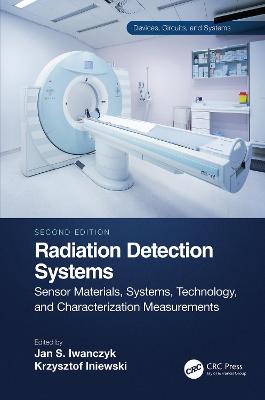Devices, Circuits, and Systems
3 total works
In the not too distant future, internet access will be dominated by wireless networks. With that, wireless edge using optical core next-generation networks will become as ubiquitous as traditional telephone networks. This means that telecom engineers, chip designers, and engineering students must prepare to meet the challenges and opportunities that the development and deployment of these technologies will bring.
Bringing together cutting-edge coverage of wireless and optical networks in a single volume, Internet Networks Wired, Wireless, and Optical Technologies provides a concise yet complete introduction to these dynamic technologies. Filled with case studies, illustrations, and practical examples from industry, the text explains how wireless, wireline, and optical networks work together. It also:
- Covers WLAN, WPAN, wireless access, 3G/4G cellular, RF transmission
-
- Details optical networks involving long-haul and metropolitan networks, optical fiber, photonic devices, and VLSI chips
-
- Provides clear instruction on the application of wireless and optical networks
Taking into account recent advances in storage, processing, sensors, displays, statistical data analyses, and autonomic systems, this reference provides forward thinking engineers and students with a realistic vision of how the continued evolution of the technologies that touch wireless communication will soon reshape markets and business models around the world.
The advances in semiconductor detectors, scintillators, photodetectors such as silicon photomultipliers (SiPM), and reaodut electronics have experienced tremendous growth in recent years in terms of basic technologies and variety of applications.The second edition of the book Radiation Detection Systems presents variety of radiation detection systems giving readers a broad view of the state-of–the-art in the design of detectors, front-end electronics and systems offering optimized choices of the detection tools for a particular application. The new edition has been divided into two volumes. This first volume, on Sensor Materials, Systems, Technology and Characterization Measurements puts emphasis on sensor materials, detector structures, front electronics technology and their designs as well as system optimization for different applications. Also, the book include characterization measurements of the developed detection systems. Featuring contributions from leading experts and pioneers in their respective fields, this book
• describes progress in growth technologies of cadmium zinc telluride (CdZnTe) and cadmium telluride (CdTe) materials
• shows variety of specific detector structure designs and their integration with front-end amplification/processing electronics
• presents detection systems based on CdZnTe and CdTe detector technologies that are optimized for specific applications. The designed systems are characterized in terms of their spectral responses, spatial and timing resolutions
• addresses incomplete charge collection, pulse pileup, charge sharing between neighboring detector pixels and other phenomena that can degrade the spectral response of photon-counting detectors
• reports new developments of silicon photomultipliers used for reading the light from scintillators that starting to make a big impact particularly in the design concepts of novel medical instrumentation
With its combined coverage of new materials and innovative new system approaches, as well as a succinct overview of recent developments, this book is an invaluable tool for any engineer, professional, or student working in electronics or an associated field. Readers can refer to the second book to get a detailed understanding of more specific applications of the detection systems in medical imaging, industrial testing and security applications.
Spectral, Photon Counting Computed Tomography
by Katsuyuki Taguchi, Ira Blevis, and Krzysztof Iniewski
Spectral, Photon Counting Computed Tomography is a comprehensive cover of the latest developments in the most prevalent imaging modality (x-ray computed tomography (CT)) in its latest incarnation: Spectral, Dual-Energy, and Photon Counting CT. Disadvantages of the conventional single-energy technique used by CT technology are that different materials cannot be distinguished and that the noise is larger. To address these problems, a novel spectral CT concept has been proposed. Spectral Dual-Energy CT (DE-CT) acquires two sets of spectral data, and Spectral Photon Counting CT (PC-CT) detects energy of x-ray photons to reveal additional material information of objects by using novel energy-sensitive, photon-counting detectors. The K-edge imaging may be a gateway for functional or molecular CT. The book covers detectors and electronics, image reconstruction methods, image quality assessments, a simulation tool, nanoparticle contrast agents, and clinical applications for spectral CT.


